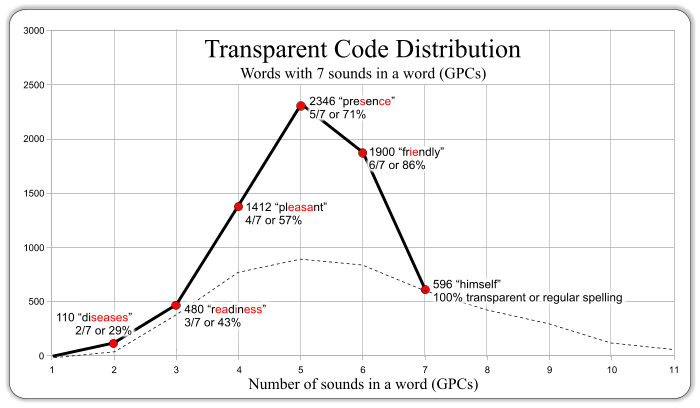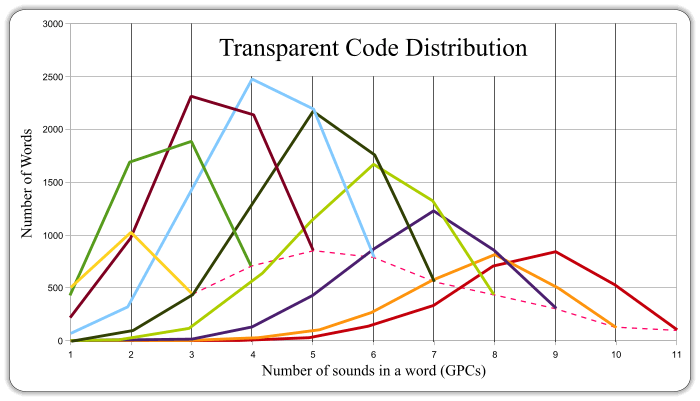

The chart below illustrates how many words become available in English if you would introduce the most productive spelling pattern at each step. Each time you introduce a new letter or spelling pattern you increase the number of words that can be spelled and pronounced with the patterns you have at your disposal. Notice the tremendous increase in vocabulary that becomes decodable early in the sequence.


What is the transparent code? Well, in English it consists of the regular
spelling patterns. We know that some words are spelled completely regularly, but
many others aren't. The regularly spelled words are words such as: bat, contact,
plants, etc. Not only do the number of sounds in a word equal the number
of letters, but also all the letters are pronounced with their most common
pronunciation. We can group words by how many of its letters fall into this
regular
group. Some words will have 100% of its letters belonging to this
group, others less. In the next two charts, the right end of each line represents
words which are spelled completely regularly; the left end of the line represents
words which are spelled less regularly. The next two charts answer the question:
How often do regular spelling patterns occur in English words?
The first chart represents words which all have 7 sounds and reveals how many words
have a given number of regular
letters. The black letters in the sample words
are the regular
letters; the red letters are the less common spelling patterns
for those sounds.

What is the significance of this to teaching literacy? Synthetic phonics teaches students to sound out the letters in a word. The reason this is so effective even in English is not only because there are many words that are completely regular, but because these regular spelling patterns also occur in thousands of other words, even if they are not spelled completely regularly. In fact, most words in my database contain a high percentage of these letters in their most common pronunciation. Very few words consist of completely irregular spelling patterns.
The next chart below maps out the same analysis for words with different number of sounds. Each line refers to words with a certain number of sounds. The height of the lines indicates the number of words containing a certain number of regular spelling patterns.
